Analysis and Optimization of Vertical NPN BJT for Strong Magnetic Fields
Abstract
1. Introduction
2. Model and Methods
3. Results and Discussion
3.1. The Change in Carrier Density Inside the Device
3.1.1. Change in Collector Current Formation
3.1.2. Change in Base Current Formation
3.2. Variation in BJT Current Gain
4. Structure Optimization
5. Conclusions
Author Contributions
Funding
Data Availability Statement
Conflicts of Interest
References
- Delmo, M.P.; Yamamoto, S.; Kasai, S.; Ono, T.; Kobayashi, K. Large magnetoresistive effect enhanced by space-charge effect in silicon. AIP Conf. Proc. 2008, 1199, 37–38. [Google Scholar]
- Delmo, M.; Yamamoto, S.; Kasai, S.; Ono, T.; Kobayashi, K. Large positive magnetoresistive effect in silicon induced by the space-charge effect. Nature 2009, 457, 1112–1115. [Google Scholar] [CrossRef] [PubMed]
- Gulyamov, G.; Majidova, G.; Muhitdinova, F. Influence of a magnetic field on the characteristics of a p–n junction diode. J. Appl. Sci. Eng. 2024, 27, 1911–1917. [Google Scholar] [CrossRef]
- Nakachai, R.; Poonsawat, S.; Sutthinet, C.; Ruangphanit, A.; Poyai, A.; Phetchakul, T. Horizontal magnetic field MAGFET by conventional MOSFET structure. In Proceedings of the 2018 International Electrical Engineering Congress (iEECON), Krabi, Thailand, 7–9 March 2018. [Google Scholar]
- Nguyen, D.-V.; Werling, L.; Po, C.; Dumas, N.; Madec, M.; Uhring, W.; Hébrard, L.; Fakri-Bouchet, L.; Pascal, J.; Wadghiri, Y. Modeling the effect of strong magnetic field on n-type MOSFET in strong inversion. In Proceedings of the 2018 25th IEEE International Conference on Electronics, Circuits and Systems (ICECS), Bordeaux, France, 9–12 December 2018. [Google Scholar]
- Hébrard, L.; Nguyen, D.V.; Vogel, D.; Schell, J.-B.; Po, C.; Dumas, N.; Uhring, W.; Pascal, J. On the influence of strong magnetic field on MOS transistors. In Proceedings of the 2016 IEEE International Conference on Electronics, Circuits and Systems (ICECS), Monte Carlo, Monaco, 11–14 December 2016. [Google Scholar]
- Marler, J.M.; McCauley, T.P.; Reucroft, S.; Swain, J.D.; Budil, D.E.; Kolaczkowski, S.V. Studies of avalanche photodiode performance in a high magnetic field. Nucl. Instrum. Methods Phys. Res. Sect. A Accel. Spectrometers Detect. Assoc. Equip. 2000, 449, 311–313. [Google Scholar] [CrossRef]
- Zyoud, S.H.; Abdelkader, A.F. The Influence of Magnetic Field on Pulse Distribution of Laser Diode. Univers. J. Electr. Electron. Eng. 2019, 6, 323–328. [Google Scholar] [CrossRef]
- Chiodi, F.; Bayliss, S.L.; Barast, L.; Débarre, D.; Bouchiat, H.; Friend, R.H.; Chepelianskii, A.D. Room temperature magneto-optic effect in silicon light-emitting diodes. Nat. Commun. 2018, 9, 398. [Google Scholar] [CrossRef] [PubMed]
- Bodart, J.R.; Garcia, B.M.; Phelps, L.; Sullivan, N.S.; Moulton, W.G.; Kuhns, P. The effect of high magnetic fields on junction field effect transistor device performance. Rev. Sci. Instrum. 1998, 69, 319–320. [Google Scholar] [CrossRef]
- Sze, S.M.; Ng, K.K. Physics of Semiconductor Devices, 3rd ed.; Wiley-Interscience: Hoboken, NJ, USA, 2006; pp. 156–160. [Google Scholar]
- Andor, L.; Baltes, H.; Nathan, A.; Schmidt-Weinmar, H.G. Numerical modeling of magnetic-field-sensitive semiconductor devices. IEEE Trans. Electron. Devices 1985, 32, 1224–1230. [Google Scholar] [CrossRef]
- Allegretto, W.; Nathan, A.; Baltes, H. Numerical analysis of magnetic-field-sensitive bipolar devices. IEEE Trans. Comput. Aided Des. Integr. Circuits Syst. 1991, 10, 501–511. [Google Scholar] [CrossRef]
- Riccobene, C.; Wachutka, G.; Burgler, J.; Baltes, H. Operating principle of dual collector magnetotransistors studied by two-dimensional simulation. IEEE Trans. Electron. Devices 1994, 41, 32–43. [Google Scholar] [CrossRef]
- Riccobene, C.; Gartner, K.; Wachutka, G.; Baltes, H.; Fichtner, W. First three-dimensional numerical analysis of magnetic vector probe. In Proceedings of the IEEE International Electron Devices Meeting (IEDM), San Francisco, CA, USA, 11–14 December 1994. [Google Scholar]
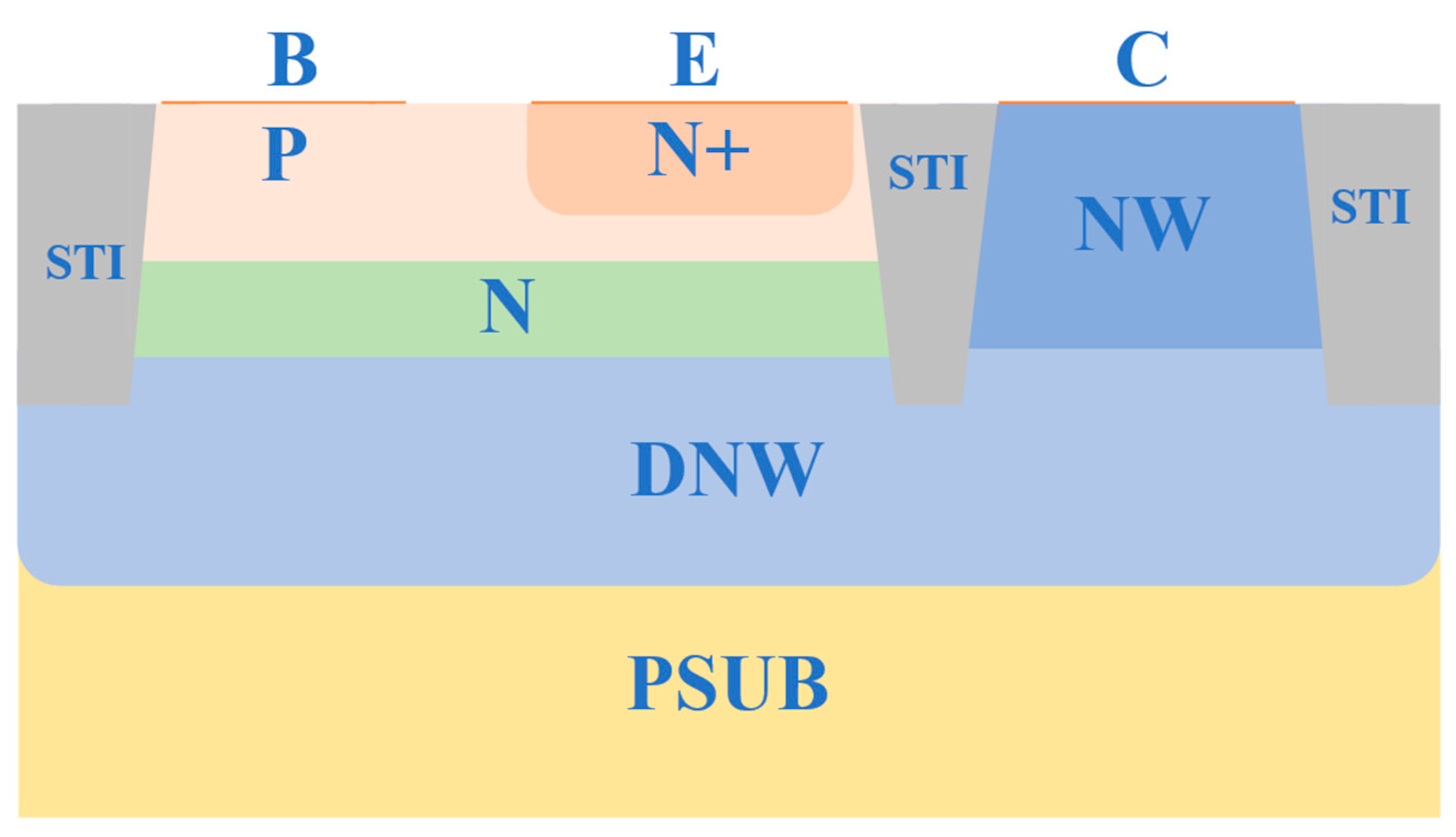

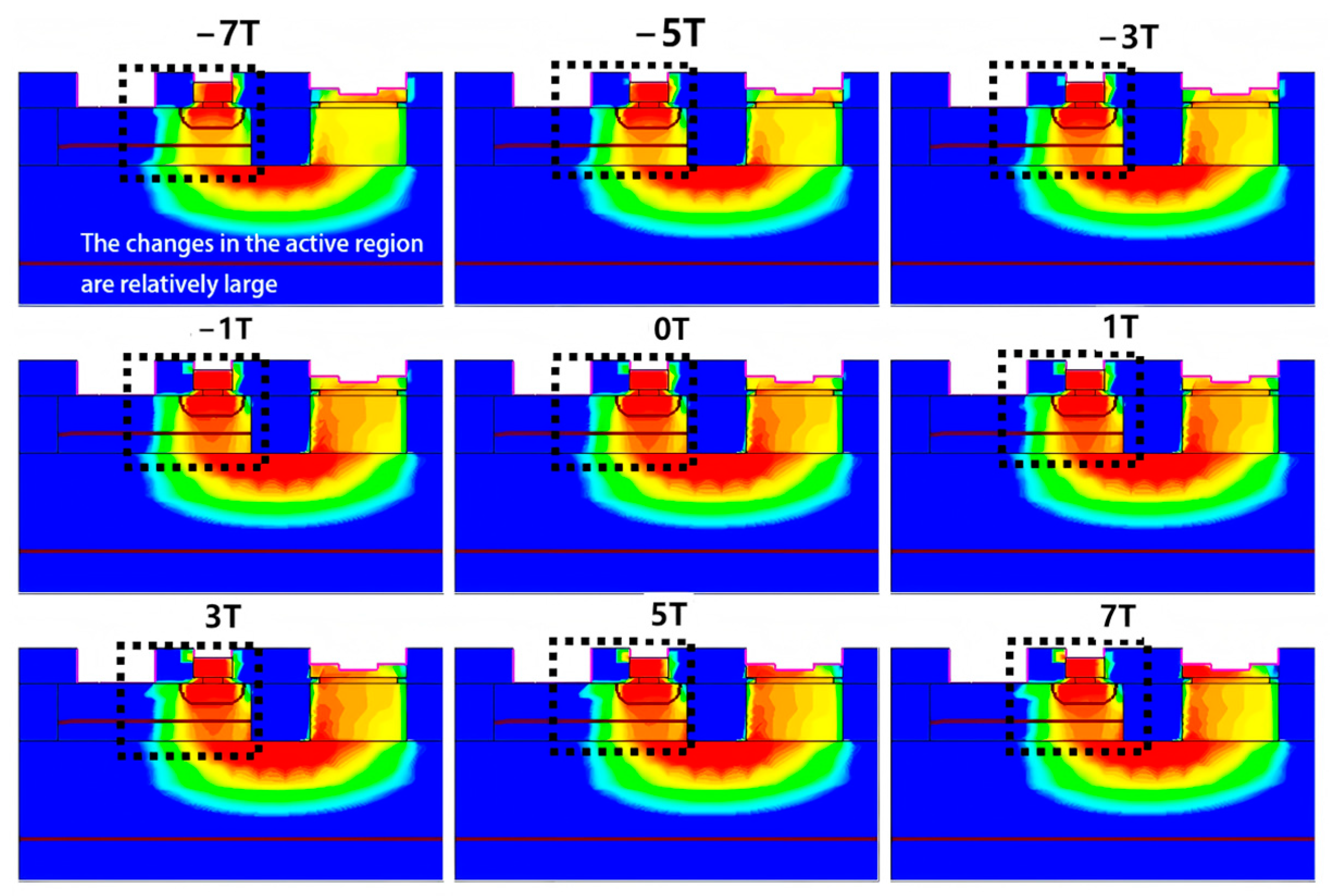




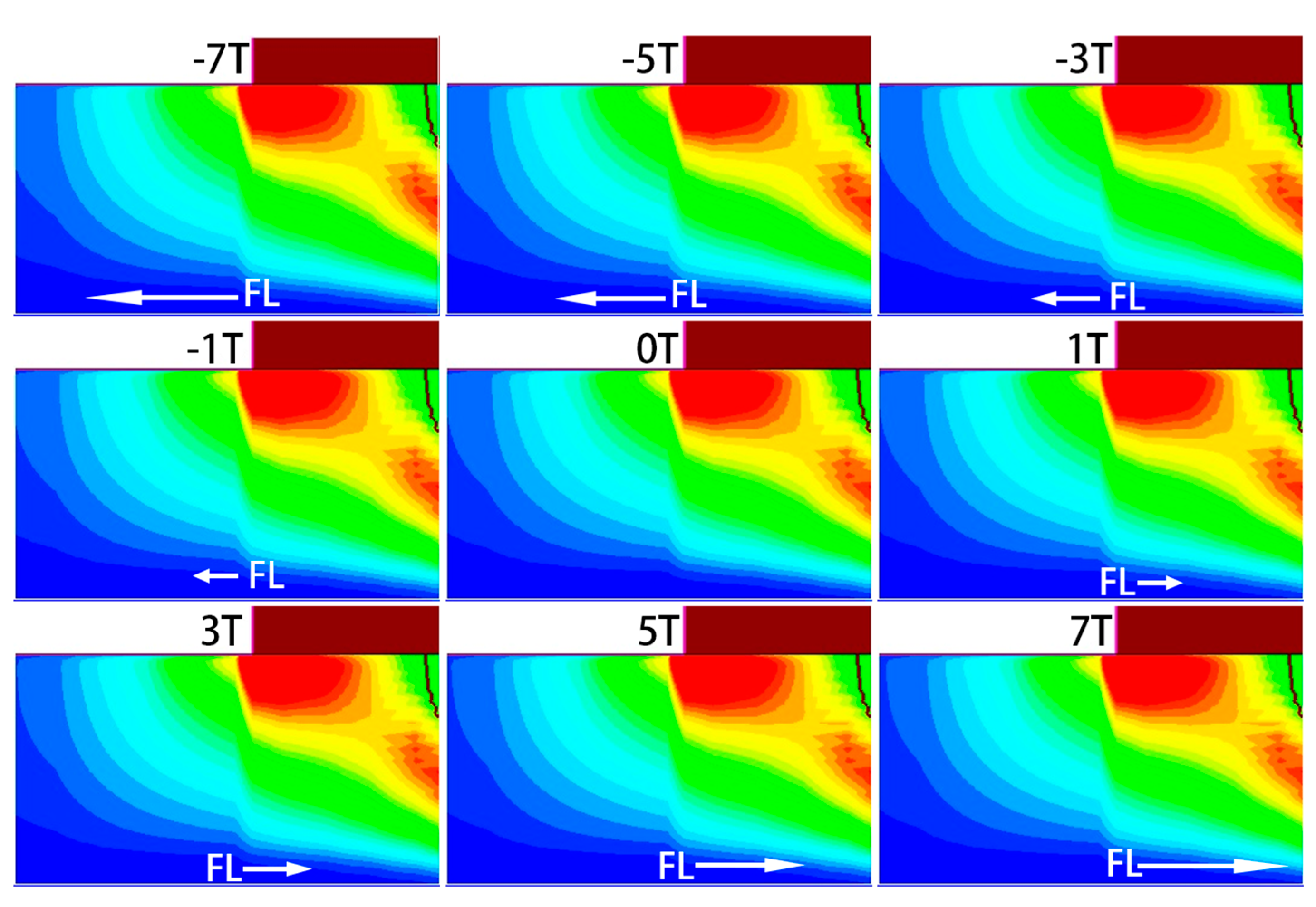
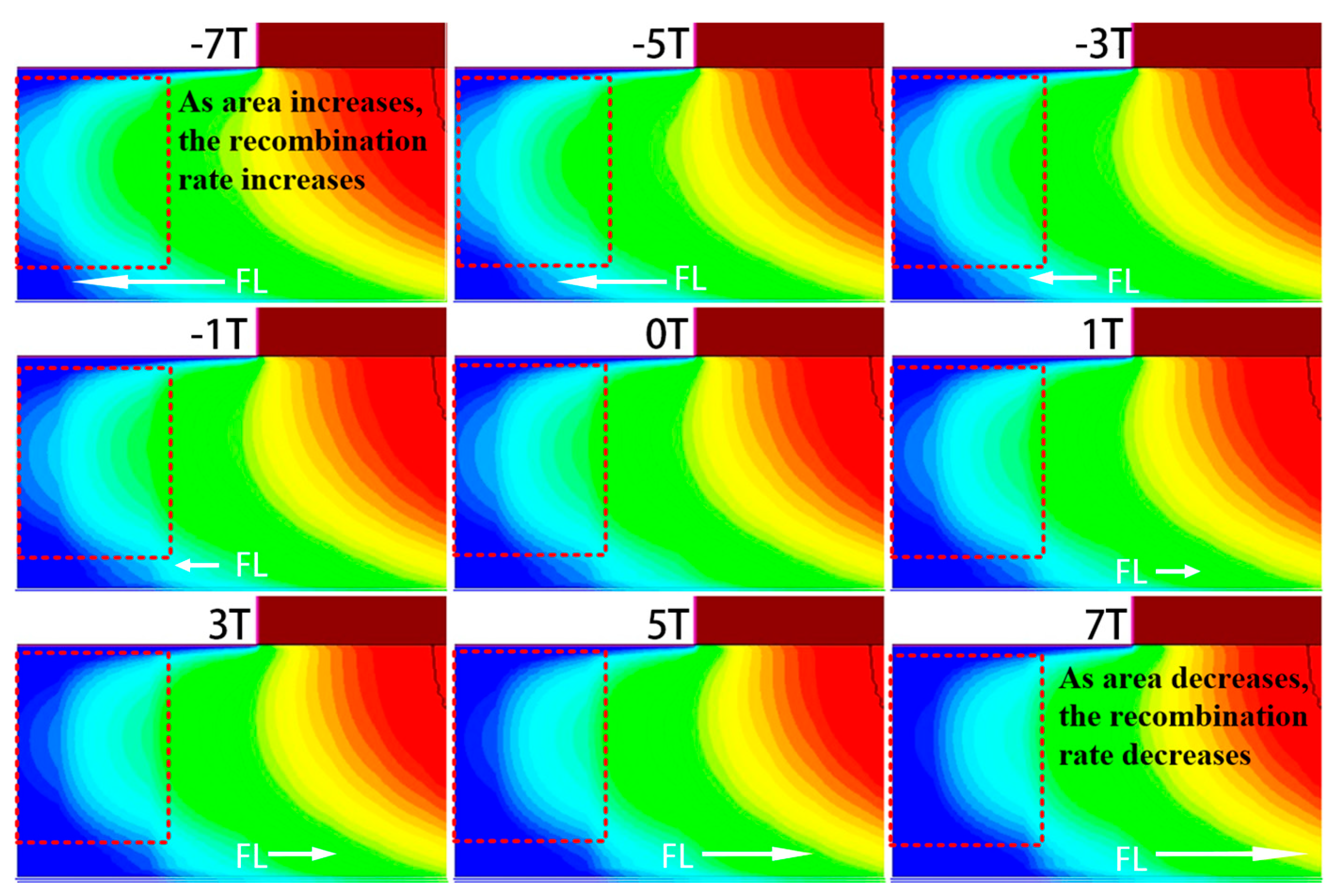

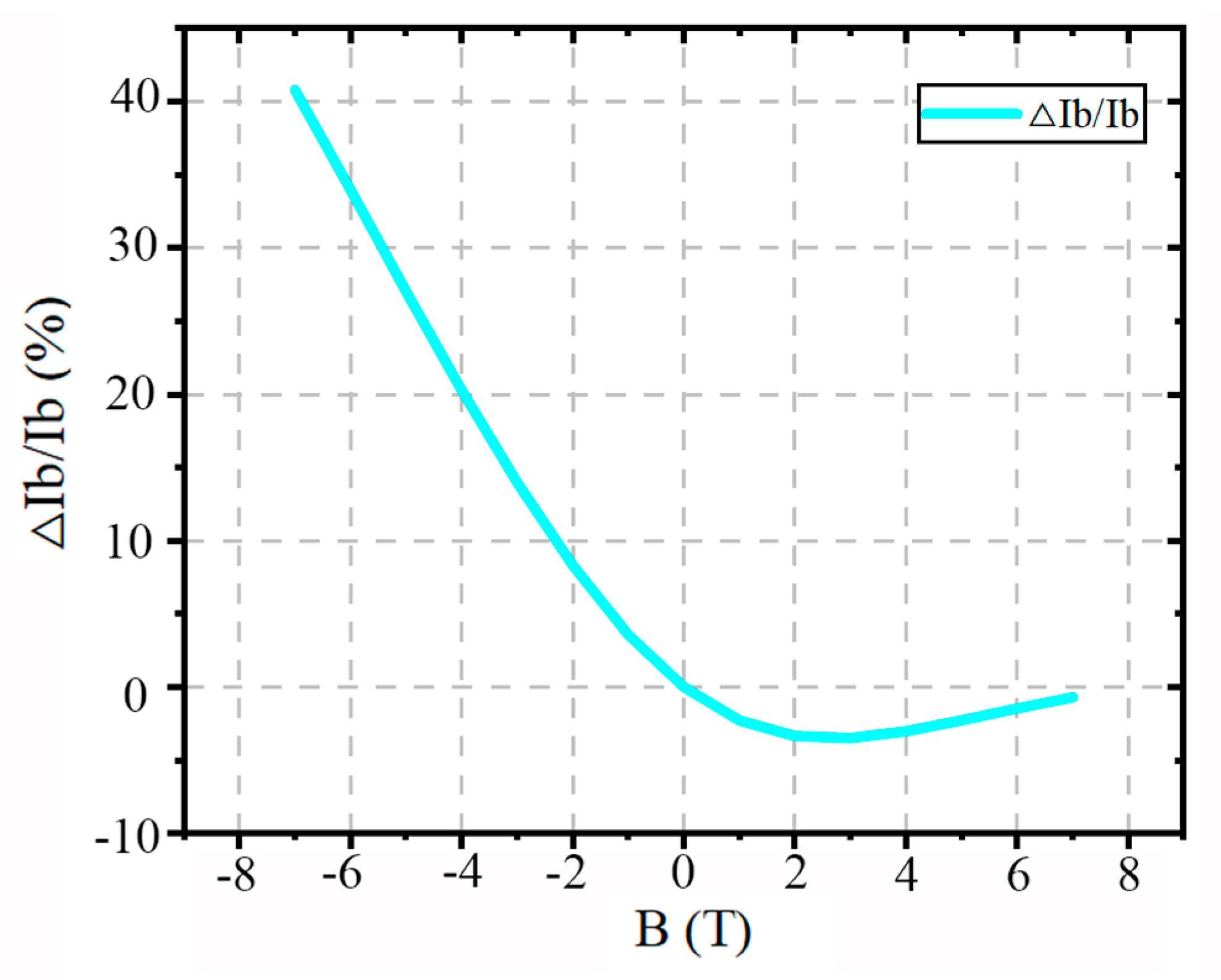


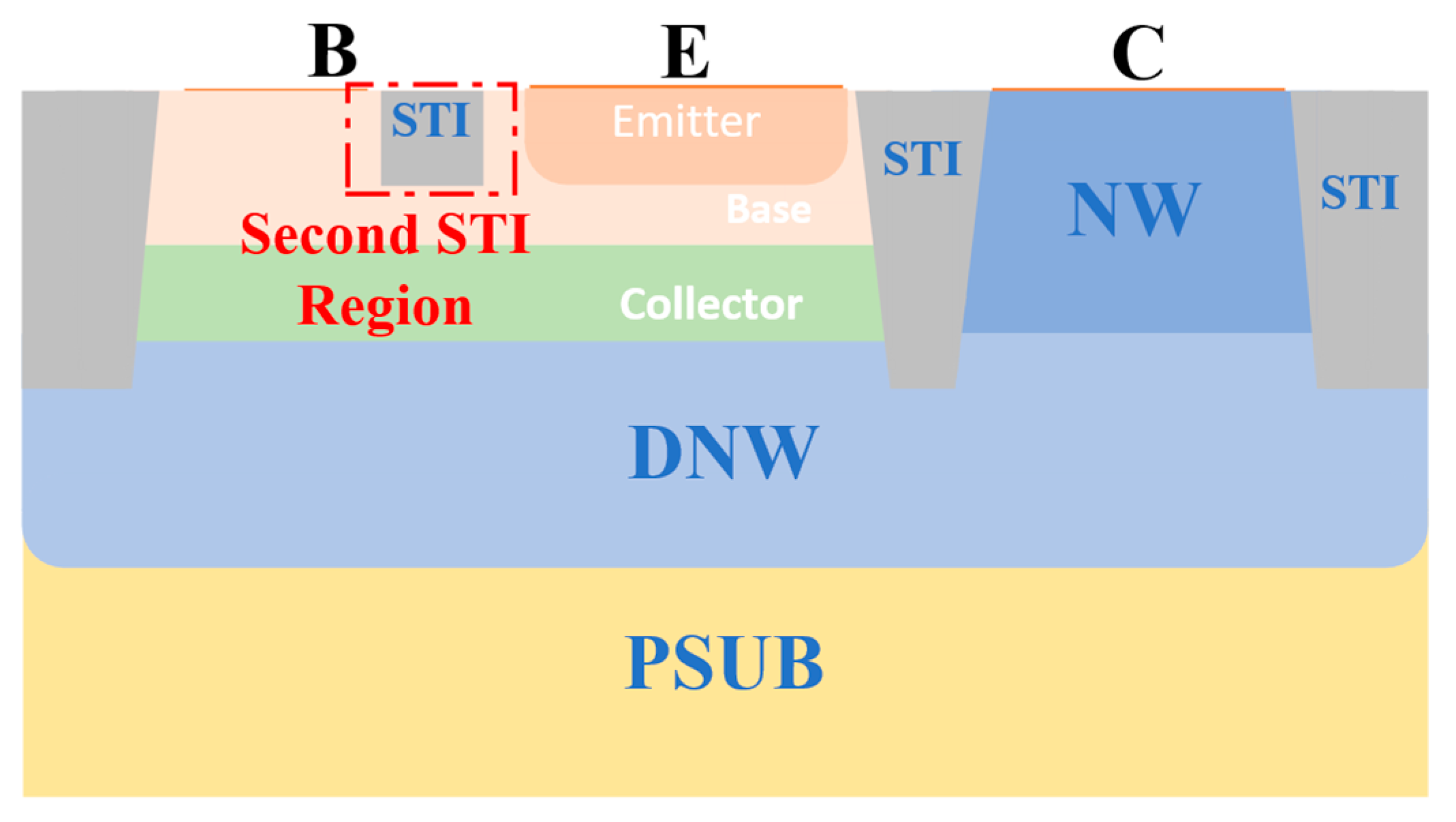

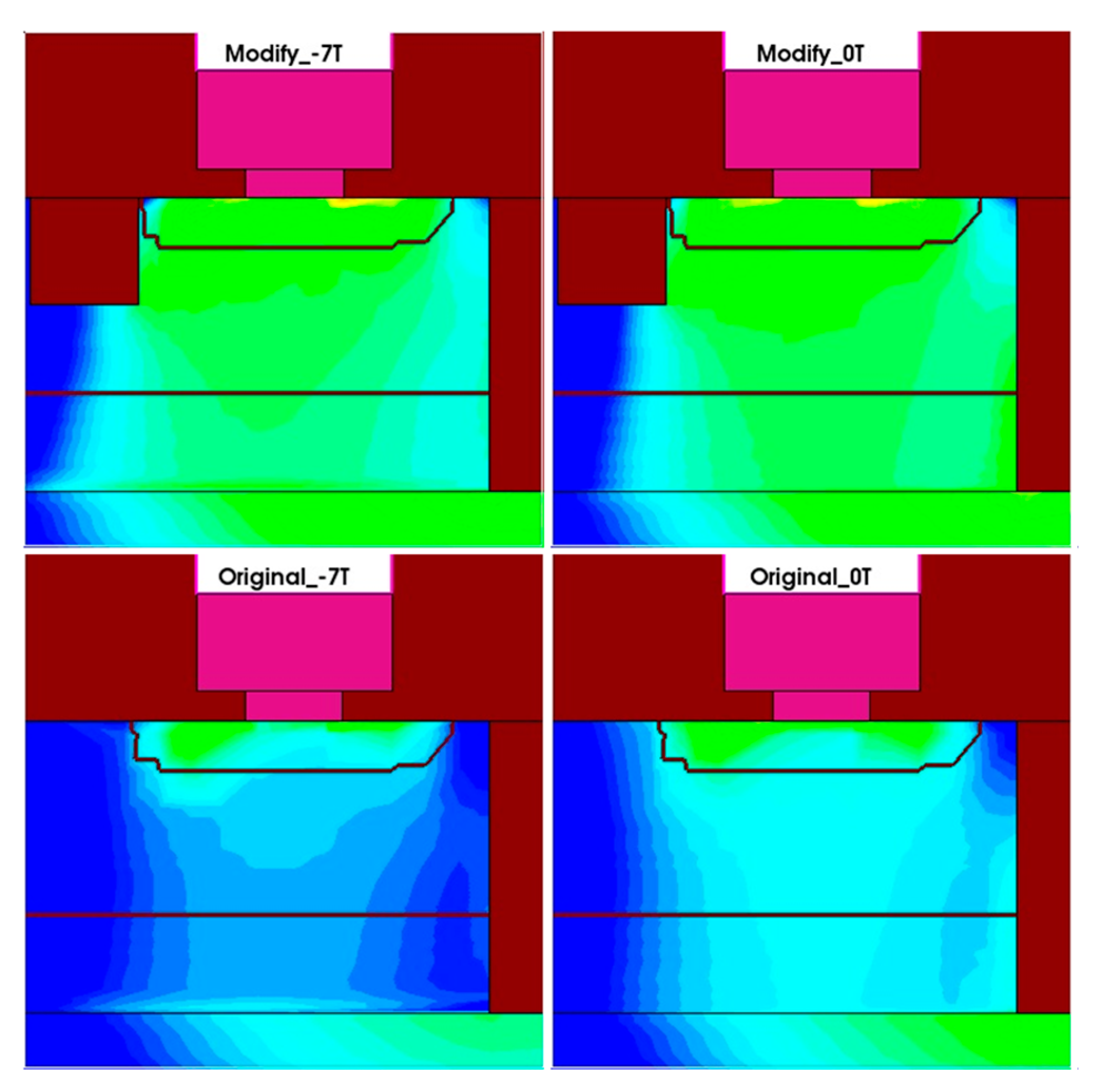


Disclaimer/Publisher’s Note: The statements, opinions and data contained in all publications are solely those of the individual author(s) and contributor(s) and not of MDPI and/or the editor(s). MDPI and/or the editor(s) disclaim responsibility for any injury to people or property resulting from any ideas, methods, instructions or products referred to in the content. |
© 2025 by the authors. Licensee MDPI, Basel, Switzerland. This article is an open access article distributed under the terms and conditions of the Creative Commons Attribution (CC BY) license (https://creativecommons.org/licenses/by/4.0/).
Share and Cite
Liao, X.; Guo, K.; Xu, C.; Liu, Y.; Meng, F.; Zhou, J.; Ding, R.; Li, J.; Huang, K.; Yang, Y. Analysis and Optimization of Vertical NPN BJT for Strong Magnetic Fields. Micromachines 2025, 16, 671. https://doi.org/10.3390/mi16060671
Liao X, Guo K, Xu C, Liu Y, Meng F, Zhou J, Ding R, Li J, Huang K, Yang Y. Analysis and Optimization of Vertical NPN BJT for Strong Magnetic Fields. Micromachines. 2025; 16(6):671. https://doi.org/10.3390/mi16060671
Chicago/Turabian StyleLiao, Xinfang, Kexin Guo, Changqing Xu, Yi Liu, Fanxin Meng, Junyi Zhou, Rui Ding, Juxiang Li, Kai Huang, and Yintang Yang. 2025. "Analysis and Optimization of Vertical NPN BJT for Strong Magnetic Fields" Micromachines 16, no. 6: 671. https://doi.org/10.3390/mi16060671
APA StyleLiao, X., Guo, K., Xu, C., Liu, Y., Meng, F., Zhou, J., Ding, R., Li, J., Huang, K., & Yang, Y. (2025). Analysis and Optimization of Vertical NPN BJT for Strong Magnetic Fields. Micromachines, 16(6), 671. https://doi.org/10.3390/mi16060671







